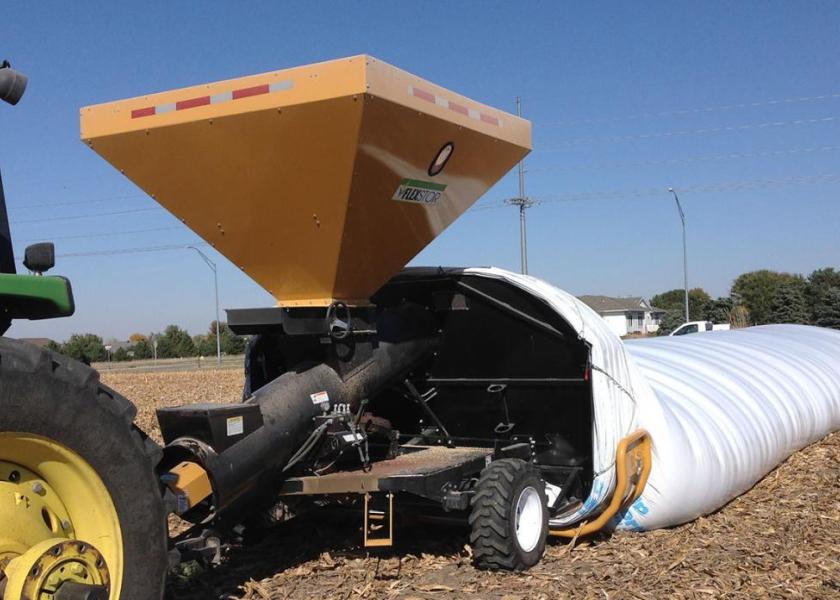Could Grain Bags Be Your Wet Grain Storage Solution?

Because grain could be coming in at higher moisture percentages than normal, you might be running low on dryer capacity—do you have a solution? One option for you to consider—grain bags, which temporarily store grain in the field.
It doesn’t mean you can dump grain into bags at crazy high moisture, but up to about 17% can be stored for a short time. They can handle some moisture because the grain has no oxygen while in storage, but too much can cause problems.
“Grain bags cost about five to seven cents per bu., not including bagging equipment costs,” says Craig Fisher, owner of Antelope Farm Supply in North Dakota. “It’s very important to keep in mind this is temporary storage.”
Grain bag lifespan is about two years, Fisher says. A bagger can cost around $24,000 and an extractor costs about $34,000. Bags can hold anywhere from 13,000 to 34,000+ bu. of grain.
From set up to winter maintenance, you will want to stay on top of grain bag management practices to make sure the storage system is successful. Here are eight ways to do that:
- You don’t want to place the bags where water will pool around them or in a high-traffic area for hungry wildlife, Fisher says. Ideally, you want to put it in a high area with a slope that two-thirds of the bag can go uphill and the last third downhill, to ensure water moves away.
- If something happens and you do incur damage, it’s likely a simple fix. Small rips and tears you can fix with tape—either what’s provided when you buy the bag, or duct or gorilla-type tapes will do the trick. “If it’s a pretty big hole use plastic or tarp over the hole and secure it with gorilla tape—our personal favorite,” Fisher says. No matter what, if you have a tear take care of it fast so it doesn’t split the bag in two.
- While insects can be a common challenge in other grain storage systems, they’re limited in grain bags because there is no access to oxygen in the bag. If you see damage from insects it’ll likely be at the very end of the bag where it closes.
- Moles, mice and rats can be problematic. An easy trick for keeping them away is to spread dry urea where you plan to put the bag. Animals don’t like the scent of ammonia and will stay away.
- Bigger mammals, such as deer, could start attacking the bag if they realize it’s filled with corn or soybeans. It’s important to patch any holes quickly so deer don’t learn what’s in the bag. In addition, Fisher says you can distract deer and other animals by setting out feed 500-plus feet away from the bag, so they stay where food is more easily accessible.
- Fortunately, there is nothing you need to do to maintain moisture. “We have customers that store corn in the 25% to 30% moisture range—but very short-term like two to three months,” says says Doug Haley, who does product development, design and dealer training for Loftness Manufacturing. Loftness is a Minnesota-based company that sells grain bags across the U.S. and Canada. “You can store at 18% to 20% but what you put in, you take out. Moisture won’t change in the bag.”
- Mow around the grain bag to keep the weeds down. This keeps hungry animals from chewing on weeds, the weeds then hitting the bag and making grain extraction easier.
- “Make sure you inspect those grain bags weekly or even more often if you have a lot of deer or animals around to make sure they don’t do damage,” Haley says. “Once they realize there is food inside those bags they’ll keep coming back.”
Read more about how harvest is going:
Harvest Moves At A Snail’s Pace, Less Than Half Of 2018 Progress
Tools to Help with High Moisture Harvest
Ferrie: Combine Monitors Show Strong Yields But Aren’t Reality
Could a Frost or Freeze This Week Still Impact the Markets?







